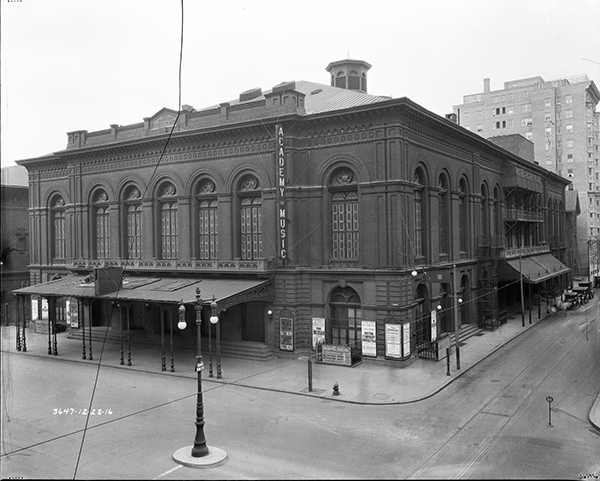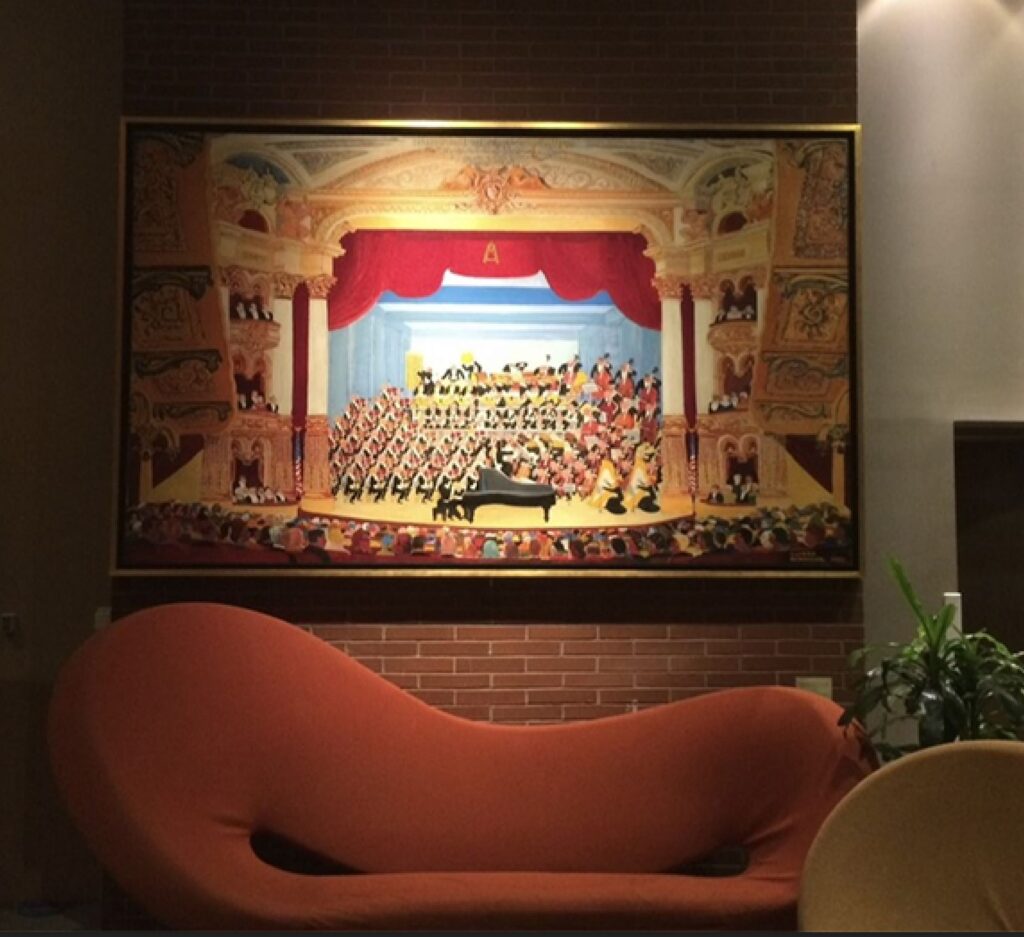It was 1952 and Philadelphians were searching for a new identity. Democrats had taken City Hall and urban renewal dollars were poised to pour in from Washington. Gimbel Brothers Department Store at 10th and Market Streets had sponsored a “Better Philadelphia Exhibition“ and now, with the betterment begun, executives wanted to celebrate the new and improved city in a triptych of murals over a bank of store elevators. They invited a stable of artists to propose paintings of lasting civic and cultural value.
Morris Berd’s Industrial Philadelphia – the Workshop of the World and Harry Gricevics’ visionary Philadelphia of Tomorrow breezed through the review process. But when the committee saw Alfred Bendiner’s study of exuberant, twirling and colorful strutting on a Broad Street, they grew uncomfortable. Although the committee liked Bendiner’s style, the mummers weren’t dignified enough, or so they told the artist. If you want the commission, find a more appropriate subject, they told him.
Bendiner hadn’t anticipated that his confident, circuslike renderings of average Philadelphians, mocking and mimicking on New Year’s Day might fail to fit some unspoken agenda. But the committee’s inclination toward white-collar Philadelphia – the starchier the better – was now obvious. They didn’t want sequins and feathers. Perhaps top hat and tails would do?

This shift pose no real problem for Bendiner. For years, his sketches of Igor Stravinsky, Jascha Heifetz, Marian Anderson, Sergei Rachmaninoff, and others had accompanied reviews of performances in The Evening Bulletin, and he had just come out with his first book, Music to My Eyes, a collection of 51 caricatures of performers on stage at the Academy of Music. Bendiner had dedicated the book to Rachmaninoff, whose memorable Philadelphia premiere of his Piano Concerto No. 3 Bendiner sketched in December 1939. “Rachmaninoff rode his own meddlesome musical steed in a fashion that held his audience spellbound,“ wrote one reviewer.
But in his revision for the Gimbel’s commission, Bendiner threw a subtle, silent curve. He replaced the profile of Wolfgang Amadeus Mozart in the medallion over the Academy’s proscenium arch with that of his wife, Betty. Call it artistic license. Call it sleight-of-hand. Bendiner introduced onto the the staid Academy and the walls of Gimbel’s Department Store, a little Mummeresque mockery.

All three paintings were removed before the Gimbels flagship store at 9th and Market Streets was demolished as part of the city’s continued renewal. (Decades later, its site remains undeveloped.) The Bendiner eventually followed the Orchestra to the Kimmel Center for the Performing Arts at Broad and Spruce Streets – again at home by an elevator.
+ + +
Adapted from “How the Orchestra Beat the Mummers” published in The Philadelphia Almanac and Citizens’ Manual for 1994 (The Library Company of Philadelphia, 1993), page 127.
